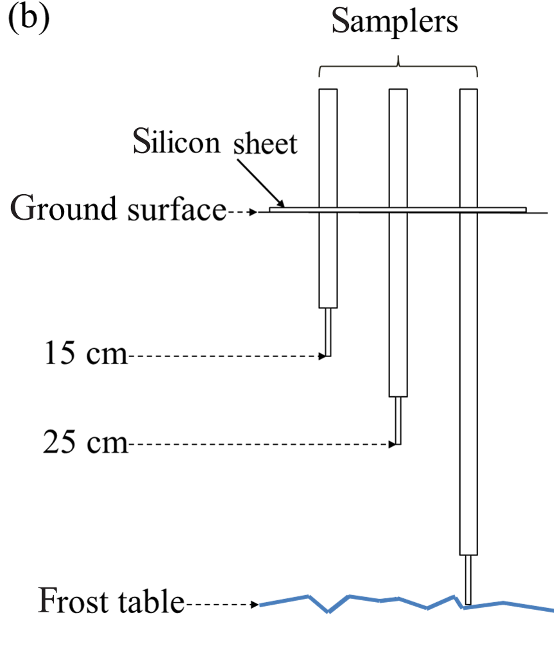

NGEE Arctic
Next-Generation Ecosystem Experiments
Advancing the predictive power of Earth system models through understanding
of the structure and function of Arctic terrestrial ecosystems
Bromide Tracer Studies Quantify Vertical and Horizontal Flow in Low- and High-centered Polygons
Bromide Tracer Studies Quantify Vertical and Horizontal Flow in Low- and High-centered Polygons
August 24th, 2020
The study provides new insight into hydrological processes of low- and high-centered polygon systems, where flow and transport field investigations are almost totally lacking.
The Objective:
- Evaluate using novel bromide tracers to identify the roles of vertical and horizontal water fluxes in the subsurface of polygonal landscapes and provide new insights and data to test and calibrate hydrological models.
New Science:
- Field-scale investigations using a conservative tracer were conducted at the Barrow Environmental Observatory (BEO) near Utqiaġvik, AK.
- Sampler arrays placed in polygon centers, rims, and troughs were used to monitor tracer concentrations.
The Impact:
- Tracer breakthrough curves revealed slow movement of water with preferential flow downward to the frost table.
- Soil permeabilities were estimated and a conceptual model developed that showed how solutes are transported within ice-wedge polygons.
- Results are now being incorporated into regional and global models of catchment hydrology.
Schematic representation of the Rhizon sampling nest used to sample tracer in active layer soils.
